Simulation Standard
Silvaco面向半导体工艺和器件仿真工程师推出的技术刊物
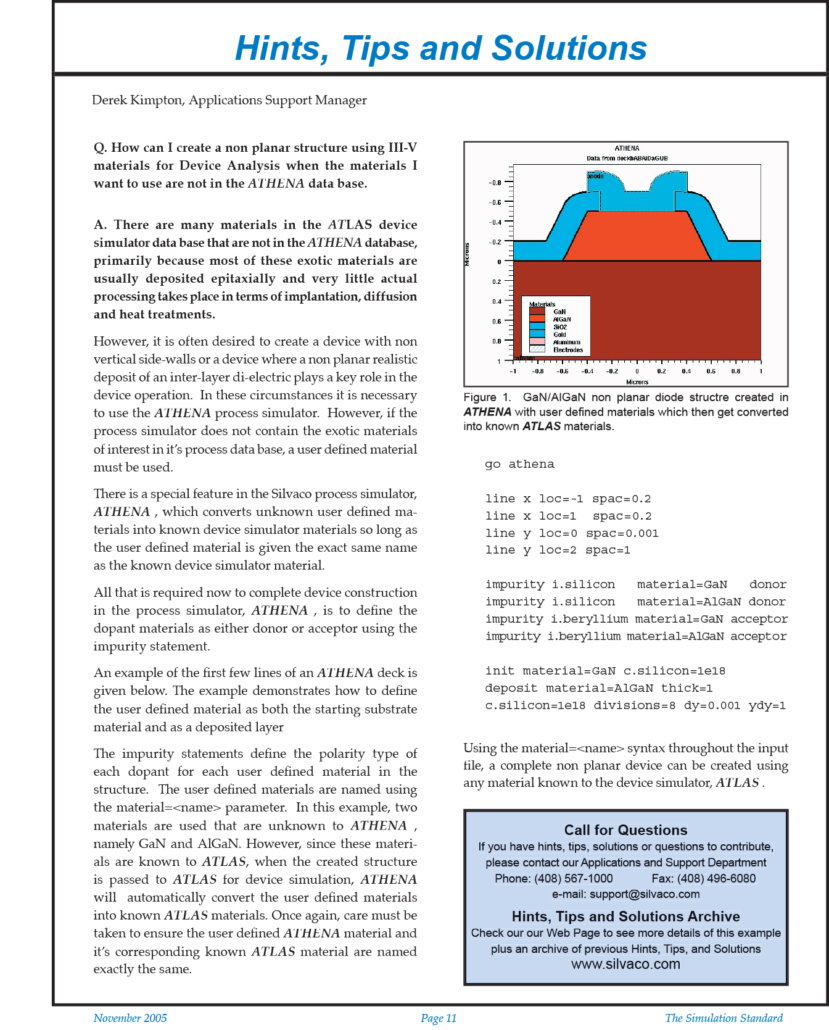
How can I create a non planar structure using III-V materials for Device Analysis
How can I create a non planar structure using III-V materials for Device Analysis when the materials I want to use are not in the ATHENA data base.
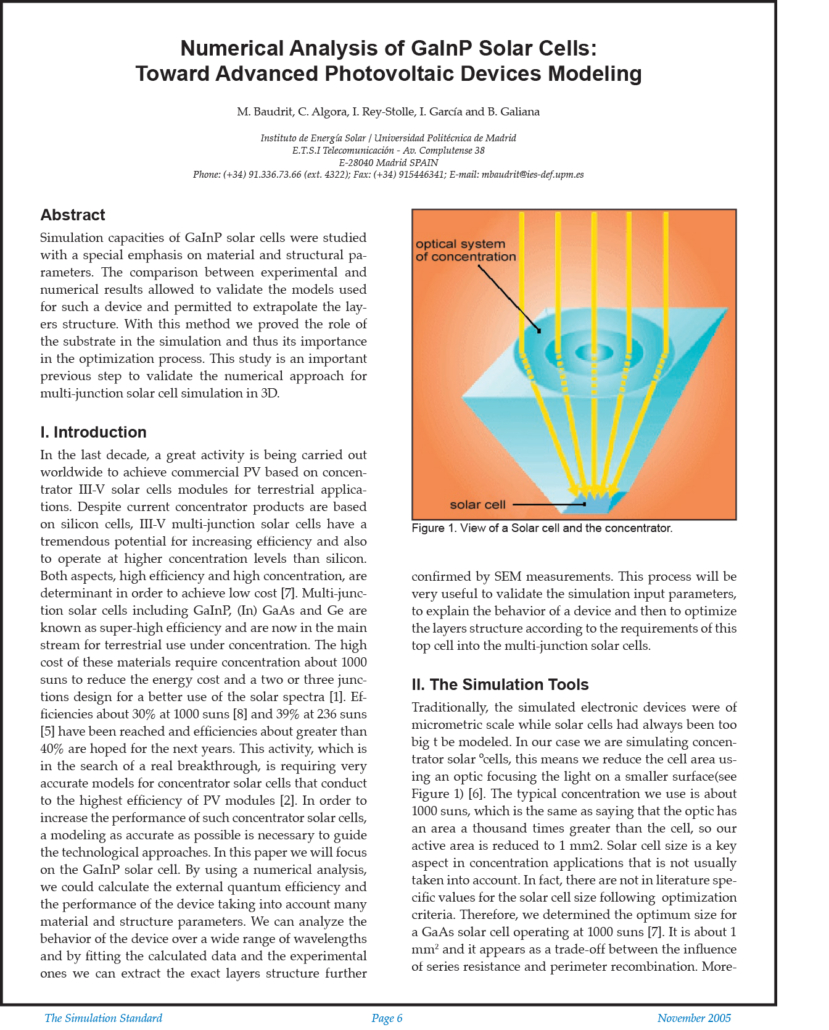
Numerical Analysis of GaInP Solar Cells: Toward Advanced Photovoltaic Devices Modeling
Simulation capacities of GaInP solar cells were studied with a special emphasis on material and structural parameters. The comparison between experimental and numerical results allowed to validate the models used for such a device and permitted to extrapolate the layers structure. With this method we proved the role of the substrate in the simulation and thus its importance in the optimization process. This study is an important previous step to validate the numerical approach for multi-junction solar cell simulation in 3D.
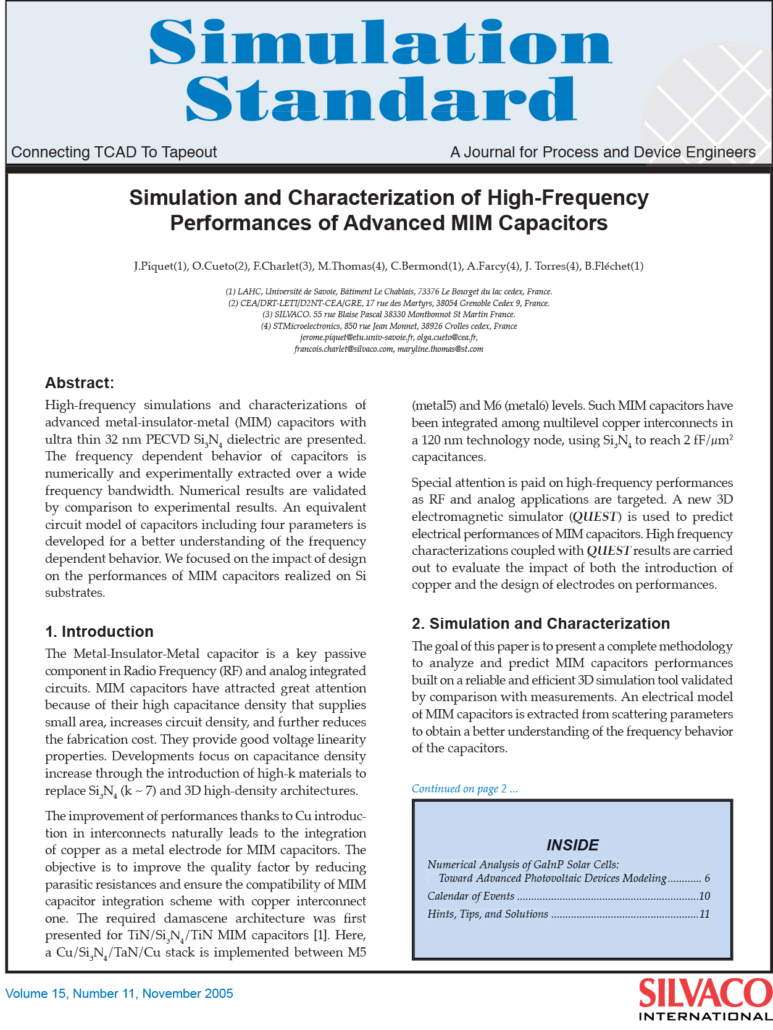
Simulation and Characterization of High-Frequency Performances of Advanced MIM Capacitors
Abstract:
High-frequency simulations and characterizations of advanced metal-insulator-metal (MIM) capacitors with ultra thin 32 nm PECVD Si3N4 dielectric are presented. The frequency dependent behavior of capacitors is numerically and experimentally extracted over a wide frequency bandwidth. Numerical results are validated by comparison to experimental results. An equivalent circuit model of capacitors including four parameters is developed for a better understanding of the frequency dependent behavior. We focused on the impact of design on the performances of MIM capacitors realized on Si substrates.
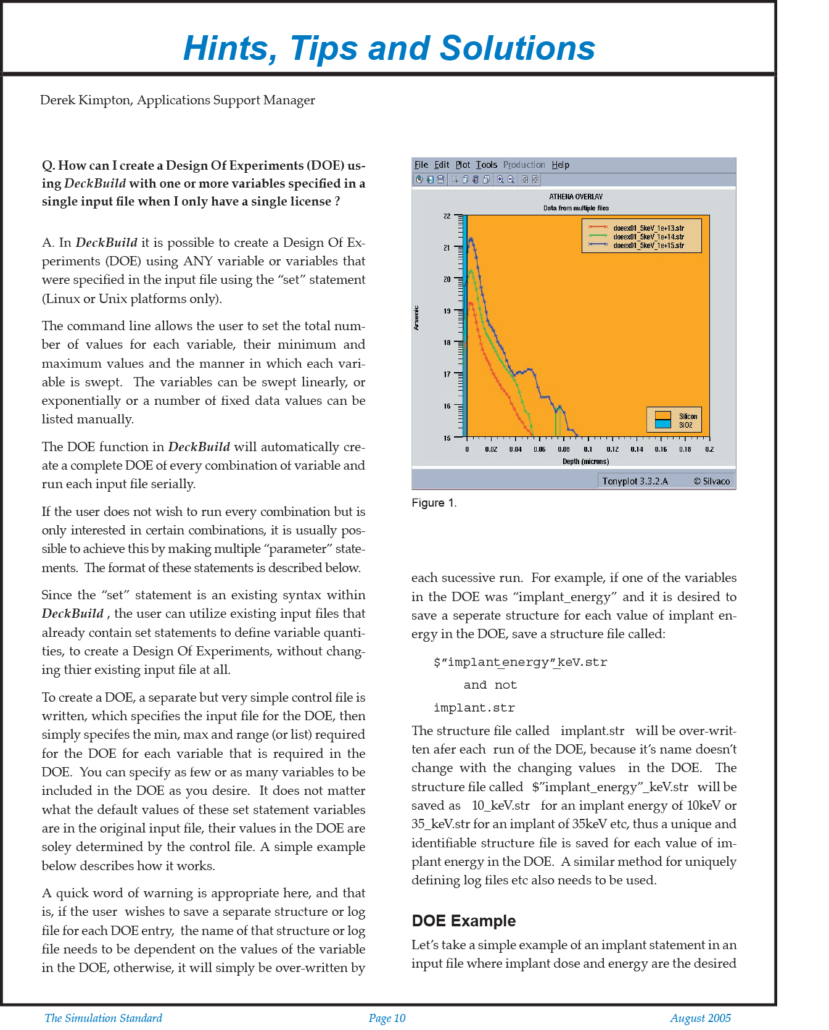
How can I create a Design Of Experiments (DOE) using DeckBuild with one or more variables
How can I create a Design Of Experiments (DOE) using DeckBuild with one or more variables specified in a single input file when I only have a single license?
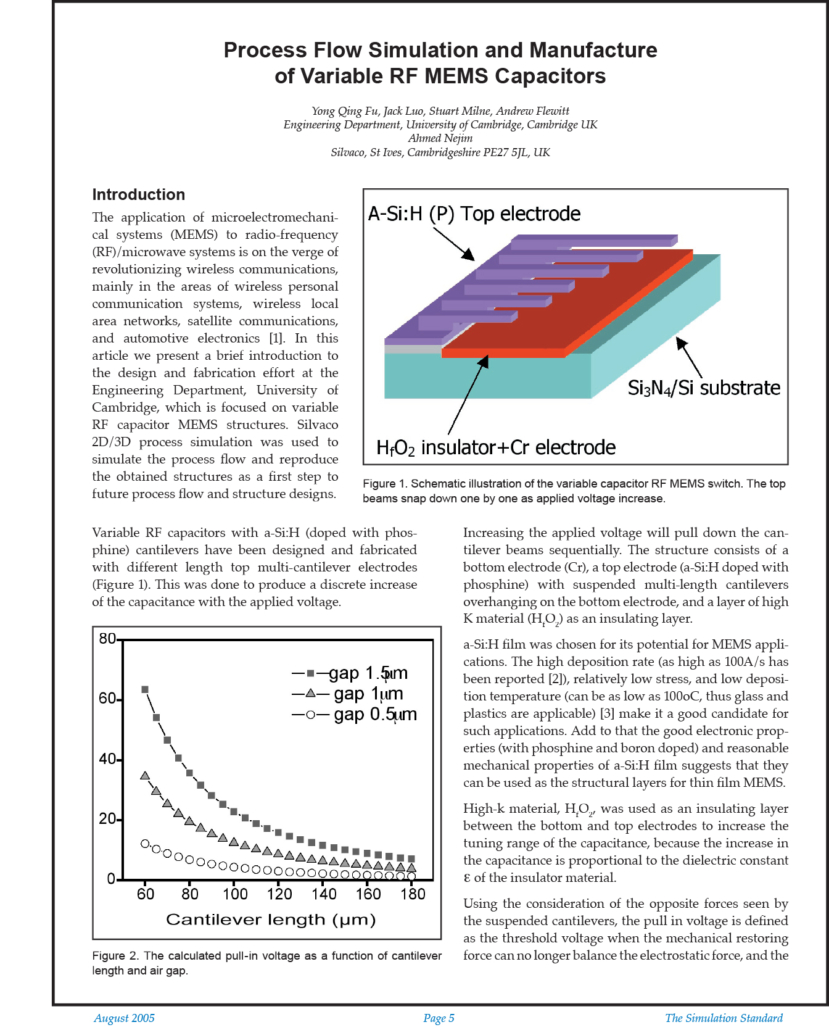
Process Flow Simulation and Manufacture of Variable RF MEMS Capacitors
Introduction
The application of microelectromechanical systems (MEMS) to radio-frequency (RF)/microwave systems is on the verge of revolutionizing wireless communications, mainly in the areas of wireless personal communication systems, wireless local area networks, satellite communications, and automotive electronics [1]. In this article we present a brief introduction to the design and fabrication effort at the Engineering Department, University of Cambridge, which is focused on variable RF capacitor MEMS structures. Silvaco 2D/3D process simulation was used to simulate the process flow and reproduce the obtained structures as a first step to future process flow and structure designs.
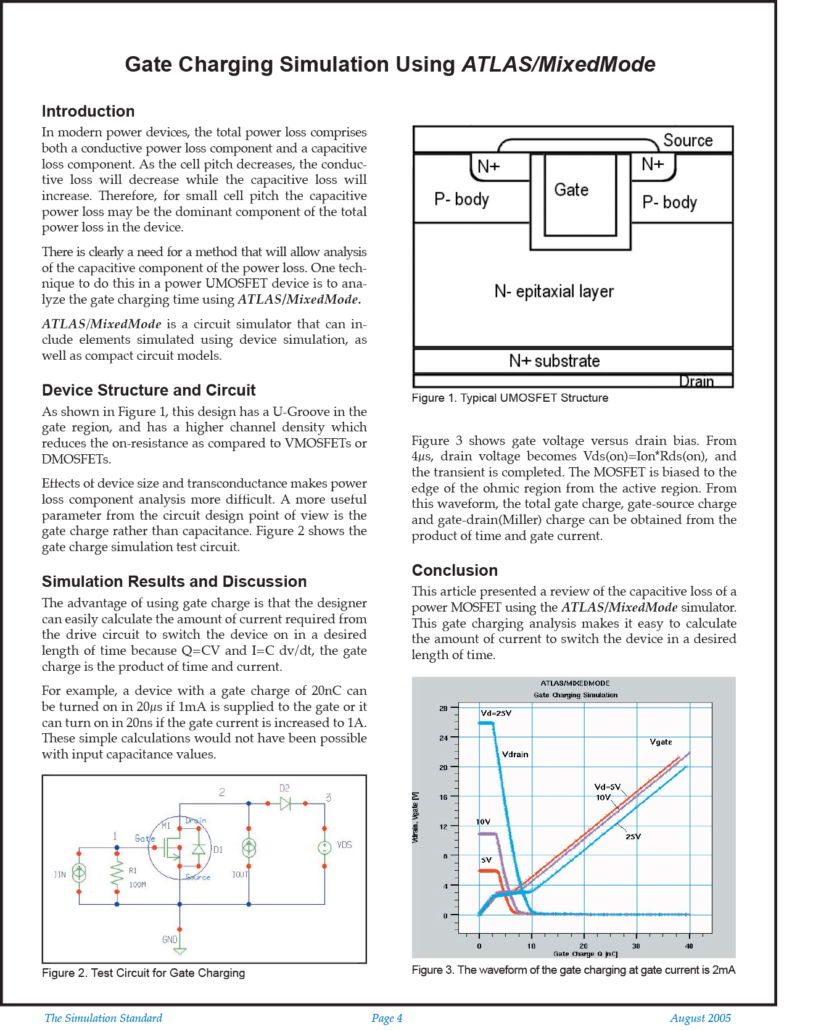
Gate Charging Simulation Using Atlas/MixedMode
Introduction
In modern power devices, the total power loss comprises both a conductive power loss component and a capacitive loss component. As the cell pitch decreases, the conductive loss will decrease while the capacitive loss will increase. Therefore, for small cell pitch the capacitive power loss may be the dominant component of the total power loss in the device.

